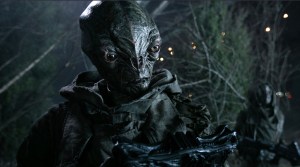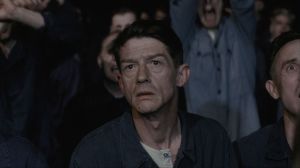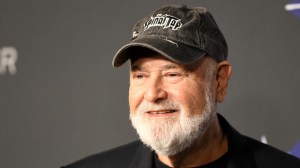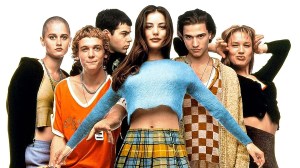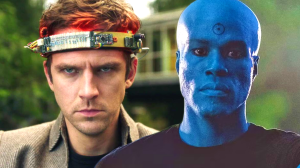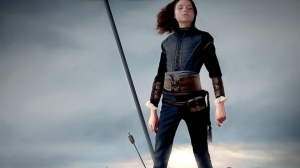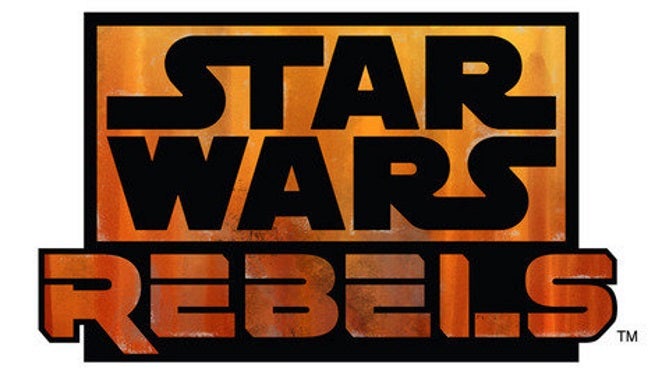
Videos by ComicBook.com
Like Star Wars: Clone Wars before it, Dave Filoni is acting as one of the driving creative forces behind the series.
During Comic Con International: San Diego last month, Filoni joined ComicBook.com and a small group of reporters for a roundtable interview to talk about the future of the (animated) Star Wars universe.
Clone Wars had a big following obviously, with a lot of young kids. As you move to Disney XD, what’s your target audience? Do you think you can still appeal to fans young and old?
I hope so, honestly. I had the same kind of target audience I did when I did Clone Wars, which I always described as “six to forty-six and beyond.” The best compliment we ever got on Clone Wars was parents coming up and telling me that it was something they could watch with their kids. I really loved that. I felt that, to be honest, as we did Clone Wars it got so dark that we alienated a good part of the younger viewers which I think works counter to your purpose on a show like Star Wars.
When fans ask me, “Are you making it for kids?” I kind of chuckle and say, “Well, yeah, of course.” And when they ask why, I’m like, “Well, how old were you when you saw Star Wars for the first time?” They’re like, “Oh, I was six years old and I was at the Cornet Theater…” and I’m like, “Exactly.”
The trick of Star Wars isn’t that you’re ever making it younger, ever. You would never dare dumb it down. It’s just that you make a story that relates to people, and everyone across a large spectrum. If the characters are good, I think that will succeed. If not, you don’t ever want to simplify things or make it silly. I want this to be visually stylized and not photorealistic but that doesn’t mean at all that it’s a simpler story or that we’ve dumbed things down.
Tension is a huge part of Star Wars and making it work. You need people to be on the edge of their seat and you have to believe — just like I felt strongly in Clone Wars — that not all of these characters will survive this.
One of my favorite animated TV shows is Robotech and when the character Roy Fokker got whacked, I just could not believe it. Changed the entire way I looked at animation and television and I was like, “Wow. That just took the stakes up for all these other characters.” I think that you felt that as a kid when you saw Obi-Wan in the original, in A New Hope. So that sensibility is always there but something else that goes with that is that if you have these serious storylines, you have to have fun. Things needs to be funny and dialogue — “get this walking carpet out of my way” — you need that stuff to make it all work.
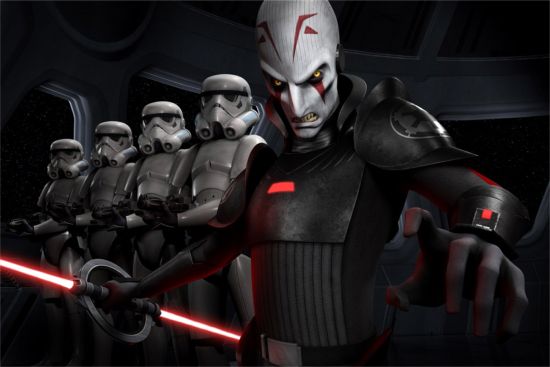
I don’t know about that.
Who came up with that?
You’re always looking for new weaponry, new cool things to do with the lightsaber. You know, I’m pretty conservative when it comes to that. I think classic lightsabers are just brilliant. Kanan has a very classic lightsaber; if you look at it, it has a guard on it that is really how Ralph McQuarrie originally drew lightsabers, with a little guard.
That lightsaber The Inquisitor has, though, came out of The Force Unleashed. It was an abandoned design that [Amy Beth Christenson], one of my designers had done. I know that she’s brilliant at pushing the limits and I said, “Do you have any old lightsabers sitting around from The Force Unleashed?” And she got the old files out and I said, “This one looks cool, like a very vicious Aerobi or something.” I think it still visually is distinct in that it’s a circle and it spins so I thought it would be okay to put it in there but I’m careful about how far I go with that stuff, that it doesn’t suddenliy become what everyone else is doing. It still has to feel like Star Wars.
An interesting detail that we studied in terms of how do we make new technology like lightsabers and stuff: something we did that’s more old-fashioned is Joel Aron, my CG supervisor, I had him go and get all of the recorded data on the lens sets they used to film A New Hope so when you’re filming in The Ghost, we shoot with the same lens that they shot in The Falcon. So you’re using a 50 or you’re using a 75 here. And we know exactly what they are for those, and for the special effects shots, so Rebels doesn’t have all the crazy, flying camerawork that Clone Wars did which is based more on a digital camera. We’ve taken this back and we’re shooting with more of an older type of camera and Joel has created a film grain. It is the final step that we actually put in front of everything we do on Rebels and it knocks a bit of the crispness off of the picture to make it look a little bit more like the classic series because that’s what we’re moving into.
So those little considerations are all things that we’ve been doing to try to make it feel like that used universe.
What about the music? Are you going to incorporate the themes of John Williams?
There’s two things about the music that Kevin [Kiner] and I discussed: When we did Clone Wars, George [Lucas] pretty much mandated that he didn’t want to use John Williams’s music. He said to save it for the important moments. So what was great about that was that by the end when we used the fanfare a couple of times it was very powerful and meaningful but because this era starts to move into the original trilogy, the themes that you’re hearing there and some of the heroic motifs…like, our Rebel theme is derived from the Return of the Jedi Rebel theme when they’re attacking the second Death Star. It’s a combination of that and some of the elements from A New Hope. So we’ve been taking the classic themes and combining them and reworking them and Kevin does his own stuff.
The Light Side of the Force has much more of a theme than it did before because I talked to Ben Burt. There is no sound design for it in the old movies but the rumbling you hear is the Dark Side. That’s when the Dark Side is at work. So we have a sound design element that’s like a whistling through the grass that you’ll hear and then we have that kind of chiming that you hear when Obi-Wan is talking to Luke for the first couple of times. We’re using those to key in The Force.
So everything has an element, much like the old films, but along with that, I’ve taken music out of a large part of these episodes. If you watch A New Hope, though the music is powerfully remembered, there are lengthy sections of that movie where there is no music at all. And that’s why you remember the way everything sounds so much. If you’re in Aunt Beru’s house in the kitchen you remember the little whirring of the machine that goes by. You remember these little key sounds. Even when they’re in the Falcon, you know? A lot of times they’re just sitting there talking and there’s no music. So you watch the first movie we did, we pulled the music out and we let the environment be the music. We let it live — the knocking and the pinging of the Ghost, the way the ductwork sounds, the machinery…and it takes a very kind of more cartoon-style animated look and I think it brings in a little more of the documentary feel that definitely A New Hope has. A New Hope has the most documentary-shot feeling of the Star Wars films if you look at it and it’s because George directed it. So we’re trying to get a little bit of that into this show.
When Clone Wars was announced to be ending, I feel like a million voices cried out. Now that Rebels is coming along, do you feel it’s fulfilling every one of those fans’ expectations?
[Laughs] No! You can’t. You can’t do that. I’m just very honest about it. Clone Wars had an interesting relationship with the fans, and I knew we would. I mean, just introducing a Padawan to Anakin Skywalker was like the first “I never thought of that!” moment from fans and then the Mandalorians are now pacifists. So it was a tumultuous relationship but I think that what I loved about Clone Wars is that we had to earn it. We had to earn the fans’ respect. There was often the idea, I think, that just becuase we put the name “Star Wars” on this that it was going to be successful and I said, “No. That’s just not going to be how it is with these characters.” I told Ashley, “You’re going to have to earn all the respect and your character is right on that edge of being likable or annoying.”
There’s the blunt fact that we gave Anakin Skywalker a young girl to be his understudy and that, at the time, could be a challenging thing for fans. But what you’re seeing now with women fans is they’re being recognized. I don’t even want to say “grow.” My wife was a fan of things when she was a kid. They just were largely ignored as a group and so it was important to make a character like Ashoka put her boldly out there with guys to see, and say, “She can stand on her own between these two guys who you think of as legends in the Star Wars universe.” What’s beautiful is that by the end of it, people I knew who were like, “Why’s she doing this nickname-y stuff,” “why’s she like this?” in the beginning when she was a kid, when she matured and she walked away, they were sad to see her go. And now the number one question I get on Rebels is, is she going to come back? That’s when I know a character has been successful.
And so when we’re creating Sabine and Hera, I feel the same way. It’s like, “You have a hotshot pilot Han Solo? Okay, I ‘ve got a hotshot pilot named Hera.” And I don’t apply any of the things to her…you know, she’s not sassy. She’s not spunky. She’s not any of those things. She’s just a badass. She’s tough, she’s determined. She’s all of those things that you’d say, “Let’s apply that to Han Solo as a character,” and that’s Hera. And yet she also has a side where she can be comforting to these characters because she feels responsibility to them. She has a maturity as a character that Han didn’t have being more brash. And Sabine was definitely a character attempt to say, “We’re doing all these things that are like the 1970s and the Star Wars that I loved, but what about kids today?” Well, they have more dyed hair, they have more punk lip, they tag. So you have to bring in relevant things to kids today and what’s shocking is that she’s almost the biggest reaction character because she’s different. Much as people say, “I want Star Wars that I grew up with,” she’s proof that they want something new, too, because otherwise the story’s not moving forward and you’re just recreating, recreating, recreating.
I think she’s an exciting, dynamic character now that people wonder, what’s she about? Why does she do this graffiti tagging? I think that’s when we’re doing good with Star Wars and Tia’s doing a great job of bringing her to life.

